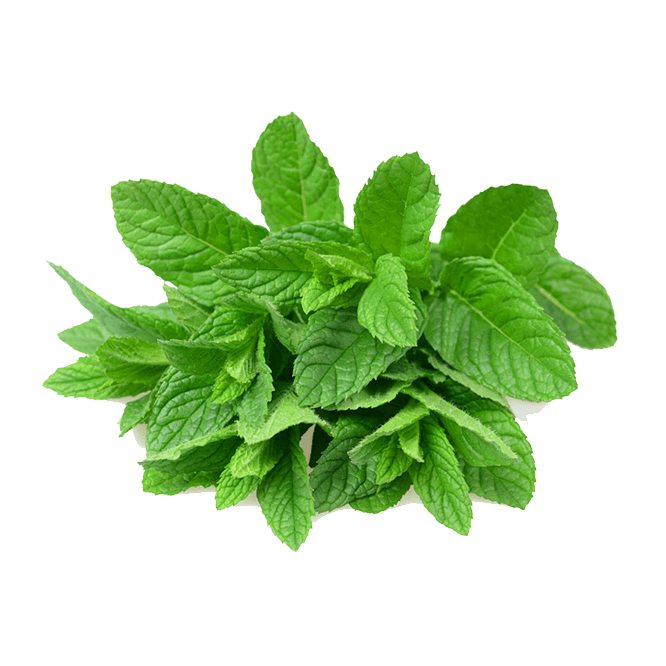Peppermint
Mentha piperita L. – Lamiaceae

Peppermint is a perennial, herbaceous plant. The world’s largest producers of leaves and essential oil of this plant are the USA, France, Italy, England and Germany.
The medicinal part of the plant is the dried leaf, which is collected during the flowering of the plant. Peppermint is rich in essential oils and tannins, typical for plants from the Lamiaceae family, to which it owes its beneficial effects. Peppermint leaves contain 1-3% of essential oil, which is rich in monoterpenes. The best-known constituent of essential oil is menthol – a monoterpene, monocyclic alcohol. The specific smell and sweet taste of mint essential oil is given by the monoterpene ketone jasmone.
In addition to the mentioned active ingredients, the peppermint leaf is rich in a complex of flavonoid heterosides, phenylpropanoic acids, tannins and carotenoids.

Many of the health benefits of this plant come from the essential oil. Peppermint acts spasmolytic (relaxes smooth muscles), antimicrobial (against fungi and bacteria), anti-inflammatory (reduces the inflammatory reaction), as a carminative (neutralizes gases), as a choleretic (stimulates the production of bile juice), as a cholagogue (stimulates the swelling of bile from the bile ducts in the duodenum), and can be used as an antidiarrheal (treats diarrhea) and as an antioxidant (neutralizes free radicals).
Peppermint leaf can be used either alone, or in combination with other herbs, for the prevention and relief of ailments of the digestive tract. The oil extract of the mint leaf, in combination with other plant extracts that are part of the Black Garlic Digestive preparation, has a very beneficial effect on the health of the gastrointestinal system.
References
- Antibacterial activity of eugenol and peppermint oil in model food systems
- Spasmolytic activity of p-menthane esters
- Research on choleretic effect of menthol, menthone, pluegone, isomenthone, and limonene in DanShu capsule
- Evidence based traditional anti-diarrheal medicinal plants and their phytocompounds
